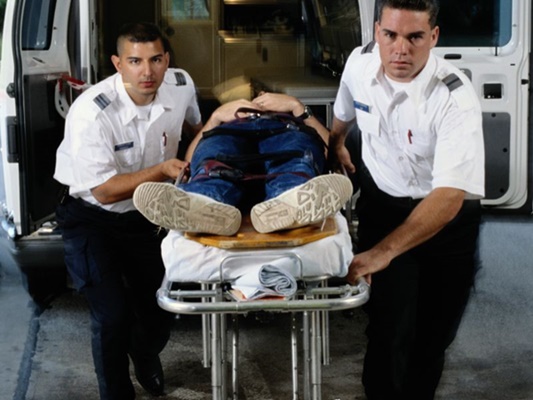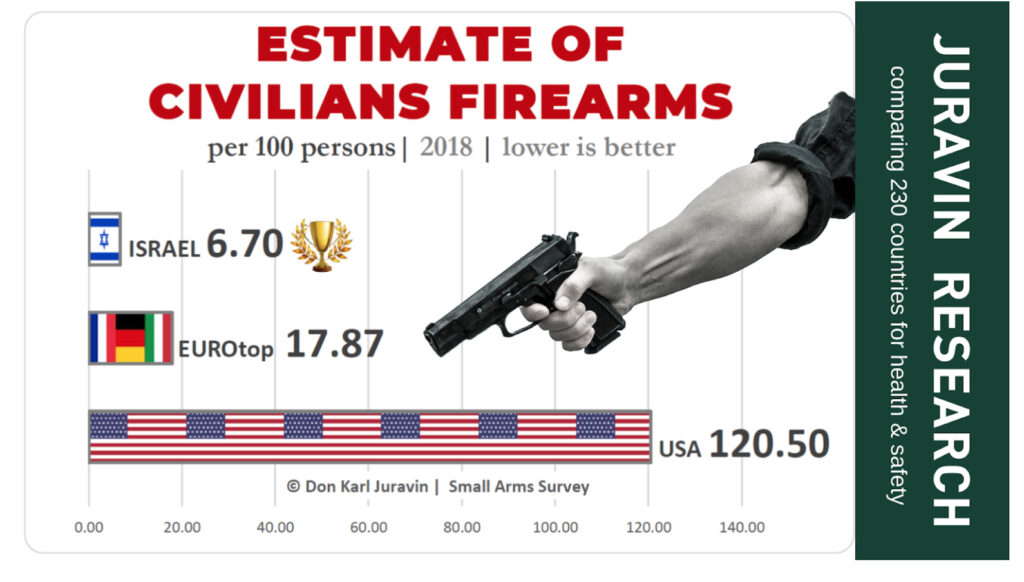
New database provides state-level estimates of gun hospitalizations.
Gun Injuries Put Over a Half-Million People in Hospitals From 2000 to 2016, Study Finds
Christopher Ingraham / The Washington Post
(May 4, 2021) — Tens of thousands of people are admitted to hospitals for gun injuries every year, according to a first-of-its-kind database that underscores how the societal costs of gun violence extend well beyond mortality.
Developed by researchers at the Rand Corp., a California-based think tank, the study found roughly 550,000 people were admitted for gunshot wounds from 2000 to 2016, representing billions of dollars in health-care costs annually, as well as untold pain and suffering.
The data comes as narrow Democratic control of Congress and the White House has ushered in hopes among advocates for new policies intended to curb gun violence in the United States. A spate of high-profile mass shootings in 2021 has ratcheted up pressure on lawmakers to act.
Much of the research on gun control deals with homicide and suicide data because state and federal governments typically keep detailed records of how and when people die. But injuries also exact a considerable economic and public health toll: Gun-related hospital visits account for an estimated $2.8 billion in health-care spending annually, as well as billions more when lost work and wages are factored in.
A 2017 study found that the average gunshot patient incurred hospital costs of more than $95,000.

Precise numbers for those hospitalizations, however, have previously been unavailable. There’s no comprehensive national database of gunshot injuries, for instance. And as the Rand researchers found, the quality of hospitalization data varies widely from state to state.
Some independent researchers, such as those with the Gun Violence Archive, have been compiling data on gun injuries based on media and police reports and other public records. But not all shootings leave that kind of paper trail.
The Rand data include estimates of gun-related hospitalizations for all 50 states from 2000 through 2016. The people behind the database hope their work will allow other researchers to better understand how state-level policies influence gun violence.
“Accurate data on firearm-related injuries are essential, and these hospitalization data will see widespread use,” said Garen Wintemute, a gun violence researcher at the University of California at Davis, who was not involved with the study.
“Previous work [on the effects of gun violence] primarily focused just on firearm deaths because injury estimates like we have produced are not available for every state,” said Andrew Morral, the director of Rand’s Gun Policy in America project, which produced the report. To fill in the gaps, Morral and his colleagues drew on a variety of sources, including state and federal databases, crime reports, hospital admission data, household surveys and emergency department data.
By combining and extrapolating from these sources, they were able to produce estimates of gun-related hospitalizations in cases where data was incomplete or missing altogether.
The researchers note their estimate of roughly 550,000 total admissions is almost certainly an undercount of gunshot victims: People with minor injuries may not seek hospital care, for instance, and wouldn’t show up in this data. Nor would anyone treated in the emergency room and released without being admitted.
At the state level, gun injuries roughly track the better-known homicide data. Louisiana leads the nation with an average of 24 gun hospitalizations for every 100,000 people each year. At the bottom of the list is Hawaii, with less than one-tenth the injury rate of Louisiana.
The authors did some preliminary work on the correlations of gun injury and made a surprising finding: At the state level, gun ownership rates aren’t closely correlated with gun hospitalizations.

“This is a little surprising,” Morral said. There’s a well-known relationship between gun ownership and suicide, for instance. But that relationship doesn’t apparently extend to gun injuries. Morral said that injuries, however, are closely correlated with rates of violent crime overall. And that suggests another driver: poverty.
The relationship between poverty and violent crime is well documented in the United States and elsewhere. According to the federal Bureau of Justice Statistics, for instance, people living in poor households “had more than double the rate of violent victimization” than those in high-income areas.
A 2018 Brookings Institution analysis found that “boys who grew up in families in the bottom 10 percent of the income distribution — families earning less than about $14,000 — are 20 times more likely to be in prison on a given day in their early 30s than children born to the wealthiest families — those earning more than $143,000.”
The correlation between state-level poverty rates and gun hospitalizations is apparent in the chart above. The relationship between hardship and gun deaths is even tighter.
Looking at the trends over time, Rand’s data shows that gun hospitalizations are basically flat through 2016. While data is not yet available for the following years, recent increases in the homicide rate suggest that gun injuries will probably creep upward, too.
Morral and his colleagues hope the new data set will pave the way for better research into how state-level policy changes affect rates of gun violence. The variation between states “can be useful for evaluating the impact of state firearm policies or other state-level factors that are hypothesized to influence firearm injury and might be a useful predictor of other phenomena at the state level,” they write.
The data could also lead to better accounting of the economic toll of gun violence in the United States.
Posted in accordance with Title 17, Section 107, US Code, for noncommercial, educational purposes.